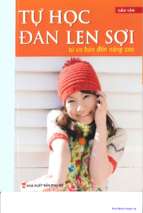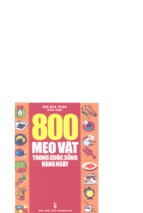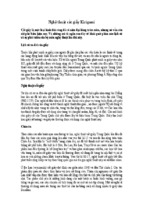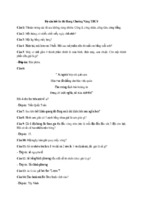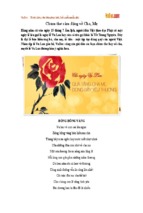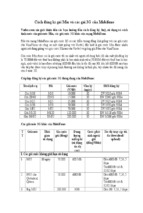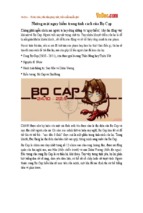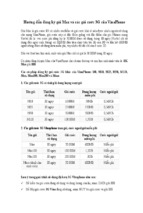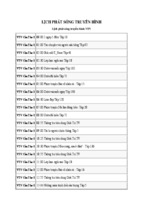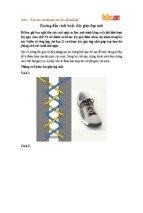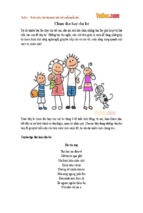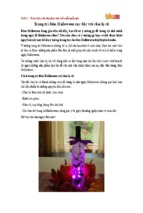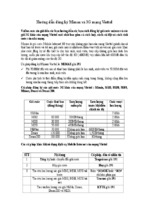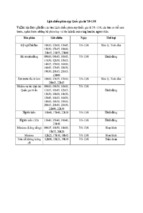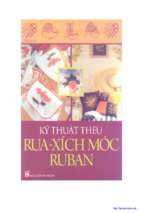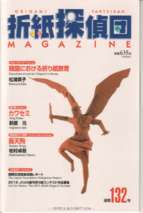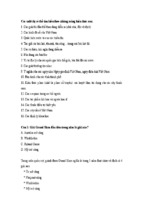LIVERPOOL
CONVENTION PACK
12-14 SEPTEMBER 2008
.
British Origami Society
Autumn 2008 Convention
Model Collection
Liverpool Hope University
Edited by Tung Ken Lam
Mark Bolitho and Sue Pope
12–14 September 2008
Contents
The Models
1
1 Simple
1.1 Albatross by Andrés Sierra . . . . . . . . . . . . . . .
1.2 Avion Simetrico by Nicolás Delgado . . . . . . . . . .
1.3 Wild One by Michael Weinstein . . . . . . . . . . . .
1.4 Sharkie by Michael Weinstein . . . . . . . . . . . . .
1.5 Stand Tall by Michael Weinstein . . . . . . . . . . . .
1.6 Simple Shirt by Gay Merrill Gross . . . . . . . . . . .
1.7 Clothespin by Gay Merrill Gross . . . . . . . . . . . .
1.8 Ali’s Dish #2 by Nick Robinson . . . . . . . . . . . .
1.9 Sloth by Nick Robinson . . . . . . . . . . . . . . . . .
1.10 Heffalump by Tony O’Hare . . . . . . . . . . . . . . .
1.11 Latajaca Strzalka by Boleslaw Gargol . . . . . . . . .
1.12 Bubble Drop by Miyuki Kawamura . . . . . . . . . .
1.13 Hungry Bird by Laura Kruskal . . . . . . . . . . . . .
1.14 Baby Shoe by Swapnil Shinde . . . . . . . . . . . . .
1.15 Squirrel by Yann Mouget . . . . . . . . . . . . . . . .
1.16 Hexa-Coaster by Loes Schakel . . . . . . . . . . . . .
1.17 Angel by Tony O’Hare . . . . . . . . . . . . . . . . .
1.18 Signpost by Max Hulme . . . . . . . . . . . . . . . .
1.19 Mobile Phone Case by Max Hulme . . . . . . . . . .
1.20 Octagonal Star by Gabriel Blandón . . . . . . . . . .
1.21 3D Card with Infant Jesus by Zsuzsanna Kricskovics
1.22 Xmas Wreath by Zsuzsanna Kricskovics . . . . . . .
1.23 Creche – Joseph by Zsuzsanna Kricskovics . . . . . .
1.24 Creche – Maria by Zsuzsanna Kricskovics . . . . . . .
1.25 Creche – Infant by Zsuzsanna Kricskovics . . . . . . .
1.26 Santa Claus with Bag by Loes Schakel . . . . . . . .
2 Intermediate
2.1 Surprise! by Heinz Strobl . . . . . . . .
2.2 Crystal Star by Denver Lawson . . . .
2.3 Ocean Liner by Mark Bolitho . . . . .
2.4 Two-sided Pinwheel by Hajime Komiya
2.5 8-Pointed Star Quilt by Paula Versnick
2.6 El Gato sin Botas by Patricio Kunz . .
2.7 Tulip Bowl by Boaz Shuval . . . . . . .
2.8 Santa’s Boot by Assia Vely . . . . . . .
.
.
.
.
.
.
.
.
iv
.
.
.
.
.
.
.
.
.
.
.
.
.
.
.
.
.
.
.
.
.
.
.
.
.
.
.
.
.
.
.
.
.
.
.
.
.
.
.
.
.
.
.
.
.
.
.
.
.
.
.
.
.
.
.
.
.
.
.
.
.
.
.
.
.
.
.
.
.
.
.
.
.
.
.
.
.
.
.
.
.
.
.
.
.
.
.
.
.
.
.
.
.
.
.
.
.
.
.
.
.
.
.
.
.
.
.
.
.
.
.
.
.
.
.
.
.
.
.
.
.
.
.
.
.
.
.
.
.
.
.
.
.
.
.
.
.
.
.
.
.
.
.
.
.
.
.
.
.
.
.
.
.
.
.
.
.
.
.
.
.
.
.
.
.
.
.
.
.
.
.
.
.
.
.
.
.
.
.
.
.
.
.
.
.
.
.
.
.
.
.
.
.
.
.
.
.
.
.
.
.
.
.
.
.
.
.
.
.
.
.
.
.
.
.
.
.
.
.
.
.
.
.
.
.
.
.
.
.
.
.
.
.
.
.
.
.
.
.
.
.
.
.
.
.
.
.
.
.
.
.
.
.
.
.
.
.
.
.
.
.
.
.
.
.
.
.
.
.
.
.
.
.
.
.
.
.
.
.
.
.
.
.
.
.
.
.
.
.
.
.
.
.
.
.
.
.
.
.
.
.
.
.
.
.
.
.
.
.
.
.
.
.
.
.
.
.
.
.
.
.
.
.
.
.
.
.
.
.
.
.
.
.
.
.
.
.
.
.
.
.
.
.
.
.
.
.
.
.
.
.
.
.
.
.
.
.
.
.
.
.
.
.
.
.
.
.
.
.
.
.
.
.
.
.
.
.
.
.
.
.
.
.
.
.
.
.
.
.
.
.
.
.
.
.
.
.
.
.
.
.
.
.
.
.
.
.
.
.
.
.
.
.
.
.
.
.
.
.
.
.
.
.
.
.
.
.
.
.
.
.
.
.
.
.
.
.
.
.
.
.
.
.
.
.
.
.
.
.
.
.
.
.
.
.
.
.
.
.
.
.
.
.
.
.
.
.
.
.
.
.
.
.
.
.
.
.
.
.
.
.
.
.
.
.
.
.
.
.
.
.
.
.
.
.
.
.
.
.
.
.
.
.
.
.
.
.
.
.
.
.
.
.
.
.
.
.
.
.
.
.
.
.
.
.
.
.
.
.
.
.
.
.
.
.
.
.
.
.
.
.
.
.
.
.
.
.
.
.
.
.
.
.
.
.
.
.
.
.
.
.
.
.
.
.
.
.
.
.
.
.
.
.
.
.
.
.
.
.
.
.
.
.
.
.
.
.
.
.
.
.
.
.
.
.
.
.
.
.
.
.
.
.
.
.
.
.
.
.
.
.
.
.
.
.
.
.
.
.
.
.
.
.
.
.
.
.
.
.
.
.
.
.
.
.
.
.
.
.
.
.
.
.
.
.
.
.
.
.
.
.
.
.
.
.
.
.
.
.
.
1
2
4
5
8
10
12
13
14
15
16
18
20
22
24
26
28
29
30
32
34
39
40
41
42
43
44
.
.
.
.
.
.
.
.
45
46
50
51
54
56
58
60
63
CONTENTS
2.9
2.10
2.11
2.12
2.13
2.14
2.15
2.16
2.17
2.18
2.19
2.20
2.21
2.22
2.23
2.24
2.25
CONTENTS
Inflatable Hen by Leyla Torres . . . . . . . . . .
Bust of Horse by Omar Tapia . . . . . . . . . .
Sparrow by Aı́da Urrutia . . . . . . . . . . . . .
Double Container by Dave Brill . . . . . . . . .
Cubo Espiral by Jaime Niño . . . . . . . . . . .
Swan by Jaime Niño . . . . . . . . . . . . . . .
Rectángulos Áureos Ortogonales by Jaime Niño
Trilobite by S. Elmer Lopez Ontiveros . . . . .
Fossil by Andrés Sierra . . . . . . . . . . . . . .
Striped Tetrahedron by John Montroll . . . . .
Chicken by Tom Defoirdt . . . . . . . . . . . . .
Manta Ray by John Morgan . . . . . . . . . . .
Stand by Marc Kirschenbaum . . . . . . . . . .
Whale by Marc Kirschenbaum . . . . . . . . . .
Dancing Bolero Dancers by Aı́da Urrutia . . . .
Ram by Jim Adams . . . . . . . . . . . . . . . .
A Tiling Problem by John Morgan . . . . . . .
3 Complex
3.1 Cowboy Hat by Owen Banton . . . .
3.2 Nonagami by Alex Bateman . . . . .
3.3 Fly by Victoria Serova . . . . . . . .
3.4 Egret by Dan Robinson . . . . . . . .
3.5 Eagle Owl by Juan Landeta . . . . .
3.6 Shark’s Attack by Fernando Gilgado
4 Special Guest
4.1 Swan by Edwin Corrie . .
4.2 Bear by Edwin Corrie . .
4.3 Ashtray by Edwin Corrie .
4.4 Pentagon by Edwin Corrie
4.5 Gondola by Edwin Corrie
.
.
.
.
.
.
.
.
.
.
.
.
.
.
.
.
.
.
.
.
.
.
.
.
.
.
.
.
.
.
.
.
.
.
.
.
.
.
.
.
.
.
.
.
.
.
.
.
.
.
.
.
.
.
.
.
.
.
.
.
.
.
.
.
.
.
.
.
.
.
.
.
.
.
.
.
.
.
.
.
.
.
.
.
.
.
.
.
.
.
.
.
.
.
.
.
.
.
.
.
.
.
.
.
.
.
.
.
.
.
.
.
.
.
.
.
.
.
.
.
.
.
.
.
.
.
.
.
.
.
.
.
.
.
.
.
.
.
.
.
.
.
.
.
.
.
.
.
.
.
.
.
.
.
.
.
.
.
.
.
.
.
.
.
.
.
.
.
.
.
.
.
.
.
.
.
.
.
.
.
.
.
.
.
.
.
.
.
.
.
.
.
.
.
.
.
.
.
.
.
.
.
.
.
.
.
.
.
.
.
.
.
.
.
.
.
.
.
.
.
.
.
.
.
.
.
.
.
.
.
.
.
.
.
.
.
.
.
.
.
.
.
.
.
.
.
.
.
.
.
.
.
.
.
.
.
.
.
.
.
.
.
.
.
.
.
.
.
.
.
.
.
.
.
.
.
.
.
.
.
.
.
.
.
.
.
.
.
.
.
.
.
.
.
.
.
.
.
.
.
.
.
.
.
.
.
.
.
.
.
.
.
.
.
.
.
.
.
.
.
.
.
.
.
.
.
.
.
.
.
.
.
.
.
.
.
.
.
.
.
.
.
.
.
.
.
.
.
.
.
.
.
.
.
.
.
.
.
.
.
.
.
.
.
.
.
.
.
.
.
.
.
.
.
.
.
.
.
.
.
.
.
.
.
.
.
.
.
.
.
.
.
.
.
.
.
.
.
.
.
.
.
.
.
.
.
.
.
.
.
.
.
.
.
.
.
.
.
.
.
.
.
.
.
.
.
.
.
.
.
.
.
.
.
.
.
.
.
.
.
.
.
.
.
.
.
.
.
.
.
.
.
.
.
.
.
.
.
.
.
.
.
.
.
.
.
.
.
.
.
.
.
.
.
.
.
.
.
.
.
.
.
.
.
.
.
.
.
.
.
.
.
.
.
.
.
.
.
.
.
.
.
.
.
.
.
.
.
.
.
.
.
.
.
.
.
.
.
.
.
.
.
.
.
.
.
.
.
.
.
.
.
.
.
.
.
.
.
.
.
.
.
.
.
.
.
.
.
.
.
.
.
.
.
.
.
.
.
.
.
.
.
.
.
.
.
.
.
.
.
.
.
.
.
.
.
.
.
.
.
.
.
.
.
.
.
.
.
.
.
.
.
.
.
.
.
.
.
.
.
.
.
.
.
.
.
.
.
.
.
.
.
.
.
.
.
.
.
.
.
.
.
.
.
.
.
.
.
.
.
.
.
.
.
.
.
.
.
.
.
.
.
.
.
.
. 66
. 68
. 70
. 72
. 75
. 78
. 80
. 82
. 86
. 89
. 92
. 94
. 95
. 96
. 100
. 102
. 106
.
.
.
.
.
.
.
.
.
.
.
.
115
116
122
125
130
132
143
.
.
.
.
.
154
155
158
161
164
166
.
.
.
.
.
5 Origami and Education
5.1 Paper-folding Polygons by Liz Meenan . . . . . . . . . . . . . . . . . . . . . . . . . .
5.2 Pull-Up Nets by Liz Meenan . . . . . . . . . . . . . . . . . . . . . . . . . . . . . . . .
5.3 Triangular Boxes from Rectangles – an Enrichment Project by Cornelius, Tubis &
Andrisan . . . . . . . . . . . . . . . . . . . . . . . . . . . . . . . . . . . . . . . . . . .
5.4 Open Triangular Box by Tubis & Cornelius . . . . . . . . . . . . . . . . . . . . . . . .
5.5 Triangular Box with Lid by Andrisan & Tubis . . . . . . . . . . . . . . . . . . . . . .
5.6 Promoting Problem-solving, Creativity and Communication in Mathematics Education by Pope & Lam . . . . . . . . . . . . . . . . . . . . . . . . . . . . . . . . . . . .
5.7 Origami in the Classroom by C. Edison . . . . . . . . . . . . . . . . . . . . . . . . . .
5.8 Origami Art Therapy by T. Kobayashi . . . . . . . . . . . . . . . . . . . . . . . . . .
Index
168
169
180
182
187
191
196
202
204
208
v
CONTENTS
SIMPLE
Simple
Albatross
Andrés Sierra, 2
Avion Simetrico
Nicolás Delgado, 4
Wild One
Michael Weinstein, 5
Sharkie
Michael Weinstein, 8
Stand Tall
Michael Weinstein, 10
Simple Shirt
Gay Merrill Gross, 12
Clothespin
Gay Merrill Gross, 13
Ali’s Dish #2
Nick Robinson, 14
Sloth
Nick Robinson, 15
Heffalump
Tony O’Hare, 16
Hungry Bird
Laura Kruskal, 22
Latajaca Strzalka
Boleslaw Gargol, 18
Baby Shoe
Swapnil Shinde, 24
vi
Bubble Drop
Miyuki Kawamura, 20
Squirrel
Yann Mouget, 26
CONTENTS
INTERMEDIATE
Hexa-Coaster
Loes Schakel, 28
Angel
Tony O’Hare, 29
Signpost
Max Hulme, 30
Mobile Phone Case
Max Hulme, 32
Octagonal Star
Gabriel Blandón, 34
3D Card with Infant
Jesus
Zsuzsanna Kricskovics,
39
Xmas Wreath
Zsuzsanna Kricskovics,
40
Creche – Joseph
Zsuzsanna Kricskovics,
41
Creche – Maria
Zsuzsanna Kricskovics,
42
Creche – Infant
Zsuzsanna Kricskovics,
43
Santa Claus with Bag
Loes Schakel, 44
Intermediate
Surprise!
Heinz Strobl, 46
Crystal Star
Denver Lawson, 50
vii
Ocean Liner
Mark Bolitho, 51
CONTENTS
INTERMEDIATE
Two-sided Pinwheel
Hajime Komiya, 54
8-Pointed Star Quilt
Paula Versnick, 56
El Gato sin Botas
Patricio Kunz, 58
Tulip Bowl
Boaz Shuval, 60
Santa’s Boot
Assia Vely, 63
Inflatable Hen
Leyla Torres, 66
Bust of Horse
Omar Tapia, 68
Sparrow
Aı́da Urrutia, 70
Cubo Espiral
Jaime Niño, 75
Trilobite
S. Elmer
tiveros, 82
Lopez
On-
Double Container
Dave Brill, 72
Swan
Jaime Niño, 78
Rectángulos
Ortogonales
Jaime Niño, 80
Fossil
Andrés Sierra, 86
Striped Tetrahedron
John Montroll, 89
viii
Áureos
CONTENTS
SPECIAL GUEST
Chicken
Tom Defoirdt, 92
Manta Ray
John Morgan, 94
Whale
Marc Kirschenbaum, 96
Dancing Bolero Dancers
Aı́da Urrutia, 100
Stand
Marc Kirschenbaum, 95
Ram
Jim Adams, 102
A Tiling Problem
John Morgan, 106
Complex
Cowboy Hat
Owen Banton, 116
Egret
Dan Robinson, 130
Nonagami
Alex Bateman, 122
Eagle Owl
Juan Landeta, 132
Special Guest
ix
Fly
Victoria Serova, 125
Shark’s Attack
Fernando Gilgado, 143
CONTENTS
Swan
Edwin Corrie, 155
Pentagon
Edwin Corrie, 164
ORIGAMI AND EDUCATION
Ashtray
Edwin Corrie, 161
Bear
Edwin Corrie, 158
Gondola
Edwin Corrie, 166
Origami and Education
"#$
"#$
!
!
Paper-folding Polygons
Liz Meenan, 169
Open Triangular Box
Tubis & Cornelius, 187
Pull-Up Nets
Liz Meenan, 180
Triangular Box with Lid
Andrisan & Tubis, 191
“My Abuelita Taught Me a Bird”
My Experiences of Teaching Origami in the
Classroom
Christine Edison
1 August, 2008
I have been teaching for five years, the majority of it high school mathematics. Mathematics, in the U.S.A., is minimally comprised of Algebra, Geometry,
and Algebra with Trigonometry. The majority of my time has been spent with
low income, high risk students.
The first day I taught as a certified teacher in a CPS school we constructed
a skeletal octahedron and found surface area, volume, and identified vertices
and faces. The students, ranging in age from 16 to 18, were amazed. Creating
a manipulative that also looked “raw” gave students a physical connection to
Platonic Solids. That day was, simply put, fun. The students did a wonderful
job, were excited, and I was hooked.
Origami gives students a wide array of skills that go hand in hand with
mathematics. Spatial skills, sequencing, and problem solving are just some of
the benefits. A great surprise was how it affects the student’s willingness to
do accompanying worksheets/bookwork. If I constructed an origami project
based on the specific skill set and created practice sheets that directly applied
to construction and the skill objective of the day the number of students who
completed their work skyrocketed, sometimes with 100% completion. In the low
income urban setting that is not the norm.
Inclusion classes are classes in the U.S. where students with special needs
are mainstreamed. Different learning modalities are often discussed, but some
tend to be put aside in the classroom. The ten times that I have had students
construct skeletal dodecahedrons in the classroom using Tom Hull’s PHiZZ unit
the students that were the best at construction were by and large special needs,
and were able to help others, often a first for them. One student, Darius*,
came after school and told me “I’m stupid, but today I wasn’t. Please make
me smart tomorrow.” While it isn’t feasible to do origami everyday, Darius’s
behavior and effort in class changed. A small success for him created a large
change in his demeanor and he ended up passing the class.
Sometimes the benefit was not academic, but social. A lot of my boys had
gone to jail and they went in and out during the school year. One student
who came out of lockup midyear was angry and non-responsive, coming to
school high most days. I decided to teach a wreath since Winter Break was
coming. Roberto1 actually took the paper, which was a change. He completed
the activity and more importantly told me about his grandmother teaching him
1 Names
changed
1
Origami in the Classroom
Christine Edison, 202
Origami Art Therapy
Toshiko Kobayashi, 204
x
Triangular Boxes from
Rectangles
Cornelius, Tubis & Andrisan, 182
Promoting
Problemsolving, Creativity and
Communication
Pope & Lam, 196
Chapter 1
Simple
1
1.1. ALBATROSS BY ANDRÉS SIERRA
SIMPLE
A4 carta
1
2
3
4
5
6
2
1.1. ALBATROSS BY ANDRÉS SIERRA
1/4
SIMPLE
7
8
3
1.2. AVION SIMETRICO BY NICOLÁS DELGADO
4
SIMPLE
1.3. WILD ONE BY MICHAEL WEINSTEIN
SIMPLE
Ahh, how to break up the radial symmetry of the square to make something flyable? Cephalopods
are radially symmetric, and while they scoot very nicely through the water they do little but flop
about outside of it. What to do? In this first aircraft, the square is treated like any other ordinary rectangle, despite its wonderful properties.
A truly crazy stunt plane that is as fun to fly as it is easy
to fold.
1. Crease in half lengthwise. Most airplanes are bilaterally
symmetric, although a of couple historical ones were not,
such as the Boomerang, designed by aviation visionary
Burt Rutan. Unfortunately, these appeared decidedly silly.
Humans are not bilaterally symmetric, despite outward
appearances. Our hearts point to the left, while our guts
point to the right. Failure of this patterning causes a disease called situs inversus, which is bad.
3. Fold the top point down to
the bottom of the colored
triangle.
2. Valley fold the corners so
that the top edges lies on
the center. Boy, this
seems awfully familiar.
3. Valley fold straight across the
front. Notice that we’re concentrating weight up in the
front. All airplanes must have
the center of gravity (an often
imaginary point at which the whole thing can be balanced on an imaginary
pin) in front of the center of lift (another imaginary point where all the
lifting forces on the aircraft are balanced). Placing the center of gravity behind the center of lift can cause the aircraft to flop about like a
Cephalopod. This is really, really bad for actual aircraft, since they
often catch on fire when flopping about. This is especially bad for the
occupants, who are, despite wishes to the contrary, equally flammable.
5
1.3. WILD ONE BY MICHAEL WEINSTEIN
SIMPLE
How many pilots does it take to screw in a light bulb?
4. Valley fold so that the folded edge on top touches the
point shown.
7. Unfold.
10. Mountain fold parallel to
the center, and perpendicular to the back. You can
feel where the fold should
be, because its where the
paper gets thicker.
12. Mountain fold along the
center line.
5. Unfold.
8. Valley fold on the crease
made in step 2.
6. Valley fold so that the raw
outside edge lies on the
crease made in step 2.
9. Mountain fold along the
creases made in step 4.
Tuck the flaps behind all
the other layers, to lock up
the front. All the best airplanes have nifty little locking folds.
11. Valley fold the wing by
bringing the folded edge
over to the point shown.
13. Fold the other wing so that
it is the same as the first.
12. Wild one!
One. The pilot holds the bulb, and the world revolves around him.
6
1.3. WILD ONE BY MICHAEL WEINSTEIN
SIMPLE
Front View
Side View
Given a good, hard throw Wild One
will perform excellent loops, turns,
and other stunts.
Top View
Of course, the one knock one could knock on the Wild One is it unimaginatively treats the wonderful
square like an ordinary old rectangle, even if it does produce extraordinary results. The best thing
about a square is that it looks the same on either side when folded diagonally. Thus we can get our
all-important bilateral symmetry down the diagonal, and make swoopy airplanes in the process.
At one point in my flight training I began flying at night. My instructor and I discussed nightime emergency
procedures, which differ slightly from daytime emergency procedures. One usually wants to find a dark
spot (where there are no Cephalopods, or people) next to a much brighter spot where there will be people
(but possibly not Cephalopods) who may be able to come to one’s aid.
As one is coming in to make the landing, one turns on the landing light, to see what it is that one is landing
in. When I questioned my instructor as to what I should do if I didn’t like what I saw, he told me to just turn
the light back off. True story.
7
1.4. SHARKIE BY MICHAEL WEINSTEIN
SIMPLE
Sharkie
The front looks like a shark, although
it performs less like a Cephalopod
and more like a flying fish. Start
with a square creased down the
diagonal.
1. Kite fold.
2. Valley fold the top point to the
bottom of the colored flaps.
3. Valley fold the top folded
edges into the center. Once
again, we put weight forward
to avoid flopping.
4. Valley fold the middle flap up
to cover the ones above it.
8
1.4. SHARKIE BY MICHAEL WEINSTEIN
SIMPLE
What’s the difference between a pilot and God?
5. Mountain fold in half.
6. Valley fold the wings,
splitting Sharkie's
mouth in half.
8. You've completed the
Sharkie! Open up the
wings perpendicular
to the fuselage, and
the stabilizers perpendicular to the
wings.
Sharkie's large wings make it a
good glider, as its weight is
spread out a great deal. However, its wings are swept back,
and it will give an interesting
flight if you throw it fast.
Front View
Top View
7. Valley fold the ends of
the wings to make
vertical stabilizers.
You may want to hold
Sharkie up to a light,
so that you can see
the layer underneath
that will be your
guide in this fold.
Side View
God doesn’t think he’s a pilot.
9
1.5. STAND TALL BY MICHAEL WEINSTEIN
SIMPLE
Stand Tall
So you’ve made a couple nice airplanes from your best kami, and found
they actually look rather spiffy. A nice way to present them as objects ‘d
art is to place them on a nice stand, like the one shown below:
2. Repeat on the bottom.
1. Valley fold so that the edges fall on the
center line.
3. Pull out the hidden
flaps of paper and
flatten.
4. In traditional Origami
this is the fish base.
Mountain fold the
lower flap behind,
allowing the shorter
flaps to flip down.
10
5. Valley fold the short
flaps up along their
bases, crease, and
unfold.
- Xem thêm -

